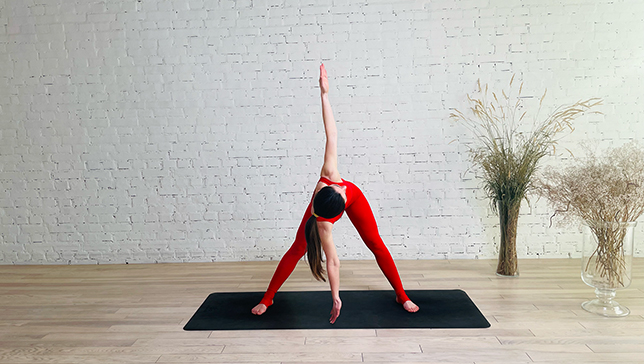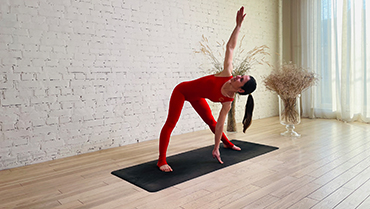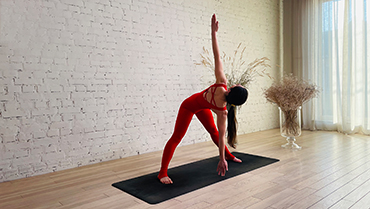Half Wide Legged Forward Bend Twist Pose - Parivrtta Prasarita Padottanasana

Contents
Half Wide Legged Forward Bend Twist Pose or Parivrtta Prasarita Padottanasana (PAHR-ee-VREE-tah prah-suh-REE-tuh pah-doh-tahn-AHS-uh-nuh) comes from six words:
“Parivrtta” — meaning “revolved”
“Prasarita” — meaning “spread” or “expanded”
“Pada” — meaning “foot” or “leg”
“Ut” — meaning “intense”
“Tan” — meaning “to stretch”
“Asana” — meaning “pose”.
This pose allows you to work on flexibility of your hamstrings, hips and shoulders while strengthening your core in the twist. The focus here on lengthening the spine is a good habit to build and use for other yoga twists.
Pose Detail
- By Type: Balancing Yoga Poses, Chest Opening Yoga Poses, Flexibility Yoga Poses, Hip Opening Yoga Poses, Strengthening Yoga Poses
- Difficulty: Beginners
- Body Position: Forward Bend Yoga Poses, Standing Yoga Poses
- By Benefit: Yoga Poses For Digestion
Step-by-Step Instructions
Benefits and Contraindications
Opens the shoulders
Improves balanse
Stimulates the abdominal organs and improves digestion
Stretches the hamstrings, calves, hips and lower back
Helps to expand chest
Lower back pain or injuries
Low blood pressure
Migraine or vertigo
Hamstring and shoulder injuries
Photo poses in different angles


Modifications, Props and Tips
- If your hands don’t easily reach the floor when you fold forward, place each hand on a yoga block. Move one of the blocks to the center between your feet for the twist.
- If your head easily touches the floor when you fold forward, narrow your stance.
- If your hamstrings are very tight, bend your knees.
- To deepen the pose, more flexible students can clasp the outer ankle of the opposite leg with their bottom hand. Bend the top elbow, and bring the top hand around to rest on the thigh of the opposite leg. For example, if your right arm is raised and left hand is on the floor, hold your right ankle with your left hand and hold your left thigh with your right hand. This extra pressure will help the torso rotate even deeper.